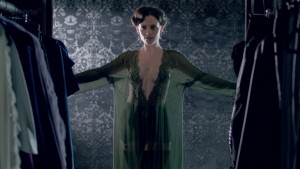Bram Stoker’s Dracula, one of the more prominent horror novels of the 19th century (while it was initially dismissed as a cheap thriller), plays not only on this fear of the supernatural, but the paranoia and fascination with “reverse invasion.” In Ledger and Luckhurst’s Fin de Siècle they describe a particular fascination with “fantasies of reverse invasion by the French or Germans.” (xvi) While Transylvania is neither of those areas it still falls within the mystery and almost primal realm of Eastern Europe.
Count Dracula himself plays on multiple fears and anxieties of this time period: supernatural, educated and powerful Transylvanian noble, and in combination he present the third fear of the foreigner both as something not human and not English. Aside from the dubious transaction of real estate close to the capital city of England there is also the intention to assimilate into British society. As the Count is showing Jonathan around the castle he insists that the young man stays so that he can learn to speak proper English. When Jonathan remains confused, as Dracula speaks perfect English, he is offered this explanation, “ True, I know the grammar and the words, but yet I know not how to speak them…I am content if I am like the rest, so that no man stops if he sees me, or pause in his speaking if he hears my words, to say, ‘Ha, ha! A stranger!’ I have been so long master that I would be master still.” (25) By assimilation into British culture and sounding like an Englishman Dracula can dominate the nation from the inside, and no one will suspect a thing until it is too late.
This ties into The Island of Doctor Moreau as well, relating to Prendick’s fear of every human he encounters possessing an inner beast that could break free at any moment. Dracula would become one walking among many, unsuspected and able to be a “master” in England as well as Transylvania. Jonathan is correct in stating that Dracula speaks perfect English, but he does not possess the accent necessary to maintain his high-class position[1]. In learning the “Queen’s English” dialect spoken by a majority of the upper class there is already a leap forward in Dracula’s social standing. He has the vast estate outside of London and soon will have the opportunity to become the new master of England (we all know he’s a vampire). There is also this interesting need to give the foreigner a supernatural or animalistic quality. In order for the paranoia and fear of the unknown to have any validity the foreigner must be distinguished as an “other.”
In his desire to learn the “proper” way to speak English the antagonist is bypassing the labels placed upon him as a foreigner. This is what makes him even more dangerous. While he still maintains the supernatural qualities, Dracula becomes an everyday English nobleman[2]. Of course there are still the ties to Translyvania, but the perfect pronunciation of the language gives comfort to the British, assuring them that he is not a wild and dangerous foreigner who has come to destroy their society.
[1] The play/film Pygmalion (also adapted as the musical My Fair Lady) demonstrates this need to have perfect language. “An Englishman’s way of speaking absolutely classifies him.”
[2] In some versions of the film adaptations Dracula keeps his Transylvanian accent (most notably in Francis Ford Coppola’s 1992 version). By some supernatural power he possesses the ability to go unnoticed by others.
Below is a scene from My Fair Lady in which the Professor Henry Higgins discusses with his colleague the importance of speaking English in a proper manner. Keep in mind at Higgins is incredibly misogynistic and a bit racist especially when it comes to people from Eastern Europe (mostly Hungary). It doesn’t have the horror of Dracula, but perhaps it provides a bit of cheer to act as a counterpart.

